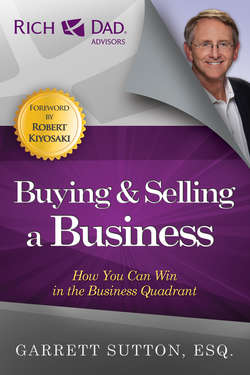Читать книгу Buying and Selling a Business - Garrett Sutton - Страница 18
На сайте Литреса книга снята с продажи.
Buyers and Sellers Buyer Strategy/Seller Strategy
ОглавлениеJust as with so many other things in life, it takes two to buy a business. A buyer and a seller are the key ingredients. Brokers, accountants, lawyers and other experts make sure everything is in the right measure and you don’t get burned. But without a willing buyer and a motivated seller there is no deal. And they may have more in common than they think.
Both the buyer and the seller want the company sold. Both want as painless a process as possible. Both want it over quickly. Neither wants to get very far into the deal and have it fall apart. Neither wants the word to get out that the deal is in process. And neither wants the business to fail.
With so much in common, how could anything go wrong? Simple, buyers and sellers speak different languages. Each is reading for different clues, deciphering vastly different nuances, viewing the whole process through a different set of lenses. And this is exactly as it should be. Friendly skepticism is the ideal in all adversarial transactions. Former American President, Ronald Reagan, used to chide the then-Soviet Premier, Mikhail Gorbachev, with the phrase “Trust, but Verify.” The United States was willing to accept what the Russians said was true only after the United States had verified it to be true. As with nuclear warheads, the same is true for deal points. While negotiations may be pleasant exchanges and the buyer and seller may become best buddies after all is said and done, neither should lose that sense of skepticism and the need to verify key points.
It goes without saying that the wants and needs of buyers and sellers are often at odds with one another. Knowing these wants and needs, being able to put yourself in the other party’s shoes, will help in reaching a deal that is acceptable to both sides. Or it may just as easily assist in a deal not coming together. It should be noted that not every deal is finalized, nor should they be concluded. Some deals you will walk away from, a few you will run from. By following the key elements we discuss in this book, by using your intuition and judgment, you will know which deals to complete and which to discard as unrealistic, overpriced or downright scary.
As a general overview, the buyer is watching the road ahead. All discussions are filtered through a view of future goals. In contrast, the seller is watching the rearview mirror. All discussions are filtered through historical contexts. While both may be in the same room, they often hear different conversations due to their respective filters. Knowing this and trying to see through the other’s filter can make the whole process a little more clear.
Know your audience. Both buyer and seller are auditioning. Both are posturing. The buyer wants to convince the seller that he or she has the financial and moral wherewithal to live up to contractual obligations. The seller wants to convince the buyer that his or her company is the best bargain going. It’s important to remember who the audience is in order to give it what it wants. For example, if the seller is concerned about the future of employee positions and the buyer is only focusing on streamlining management, neither will be satisfied.
